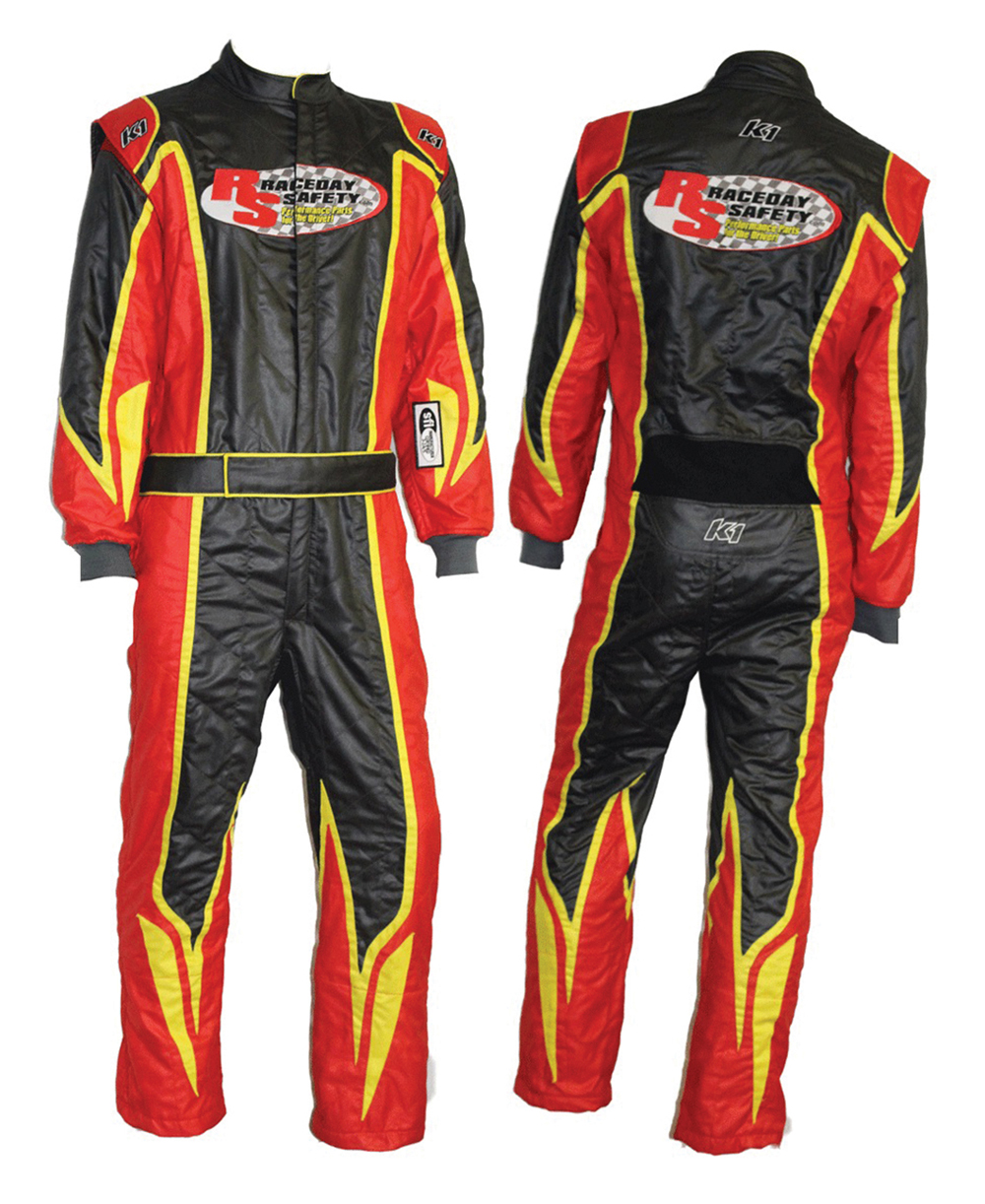Ask The Experts: Drivers’ Suits
For a stock suit, the driver is looking for the closest match between his or her body size and the sizes offered by the manufacturer. The measurements most commonly taken for stock suits are height, chest, waist, hips, pants inseam, shoulders, and arm length.
Whether stock or custom, it’s important to properly measure for ideal fitment, and size up or down when needed.
It’s one of the most fundamental elements of safety equipment, and yet when it comes to drivers’ suits, one size definitely does not fit all. For this month’s column, we reached out to the experts at RaceDay Safety in Dallas, Georgia, RaceQuip in Riverview, Florida, and Speedway Motors in Lincoln, Nebraska, in order to learn—and share—how to get a suit to fit right for maximum comfort and safety.
What’s the correct way to measure for a driving suit?
Use a cloth tape measure and don’t measure yourself were the two top tips from every expert we polled. The cloth tape measure better conforms to the shape of the body to give an accurate reading. And many of the dimensions necessary for proper fitment—like leg, arm, and shoulder length—would be impossible for a person to accurately measure themselves.
Measuring techniques are different for a stock suit than for a custom suit. For a stock suit, the driver is looking for the best match between his or her body size and the sizes offered by the manufacturer. The measurements commonly taken for a stock suit are height, chest, waist, hips, pants inseam, shoulders, and arm length.
A custom suit is just that—made from scratch. Measurements of more parts of the body are needed, including torso length and the circumference of the neck, biceps, forearms, thighs, and calves.
When it’s time to measure, “it’s essential that you use the manufacturer’s size chart and their method for measuring,” said RaceQuip’s Roger Mealey. “There’s no standardization of sizes. The measuring methods can vary from one manufacturer to another, so use the method suggested by the suit manufacturer.”

“The number one mistake made when measuring for a race suit is an inaccurate waist measurement,” said Kevin Shaw of RaceDay Safety. “None of us want to admit what our waist size truly is, so the improper measurement is taken around the lower waist instead of the belly area, which is usually quite a few inches larger.”
“The driver uniforms are better if they’re a little loose on the person, so that there’s some air between the uniform and your underwear,” said Greg Nicol of Speedway Motors. When a driver is fitted for a suit at Speedway, “we’ll have them sit in a racing seat down low and at the same angle they’re at in their car to see if the suit bunches up in the crotch or pulls up at the legs. You have to be comfortable.”
“Part of the protection provided by a racing suit is the air gap between you and the suit and between the layers,” Mealey said. “If the suit is too tight, the protection will be diminished. If you are in between sizes, go to the next size up.”
For those having trouble matching their body proportions with a one-piece suit, “you may have to go to a two-piece suit, with a small or a medium bottom and a large top, or vice versa,” Nicol advised. Typically, two-piece suit jackets are long enough that there’s plenty of overlap between the bottom of the jacket and the top of the pants, he said.
The custom suit is another option for a better fit. It also affords the racer the opportunity to match the suit’s color with the car’s, and add sponsor names and logos. But there is a significant price difference between stock and custom suits. “And if you put all the sponsors on and they don’t come back, or you get new sponsors, that can create a conflict of interest, and you can’t use the suit anymore,” Shaw noted.
Is it safe to buy a child a suit that’s a bit large so he or she can grow into it?
“We have no problem with and actually encourage parents to purchase a child’s race suit a size or two larger than the optimum fit,” said Shaw. “The kids are typically not thrilled with having to wear the baggier size suit, but they quickly grow into it, and the parents do not have to buy multiple race suits every season to keep up with the growth.
“However, we strongly discourage this practice with the gloves, shoes, and helmet,” Shaw added. “The gloves and the shoes are the racer’s main connection to the race car, so a sloppy fit can hinder lap times and car control. The helmet must be perfectly fitted to do its job properly.”
ONLINE BONUS
Speedway Motors provides a clear and informative Tech Talk video on how to accurately measure for a stock driver’s suit. Watch Video
RaceDay Safety offers an instructional video from suit manufacturer K1 on how to measure for one of its custom suits. Watch Video
SOURCES
–
RaceDay Safety
racedaysafety.com
RaceQuip
racequip.com
Speedway Motors
speedwaymotors.com
 MEMBERSHIP LOGIN
MEMBERSHIP LOGIN JOIN PRI
JOIN PRI


